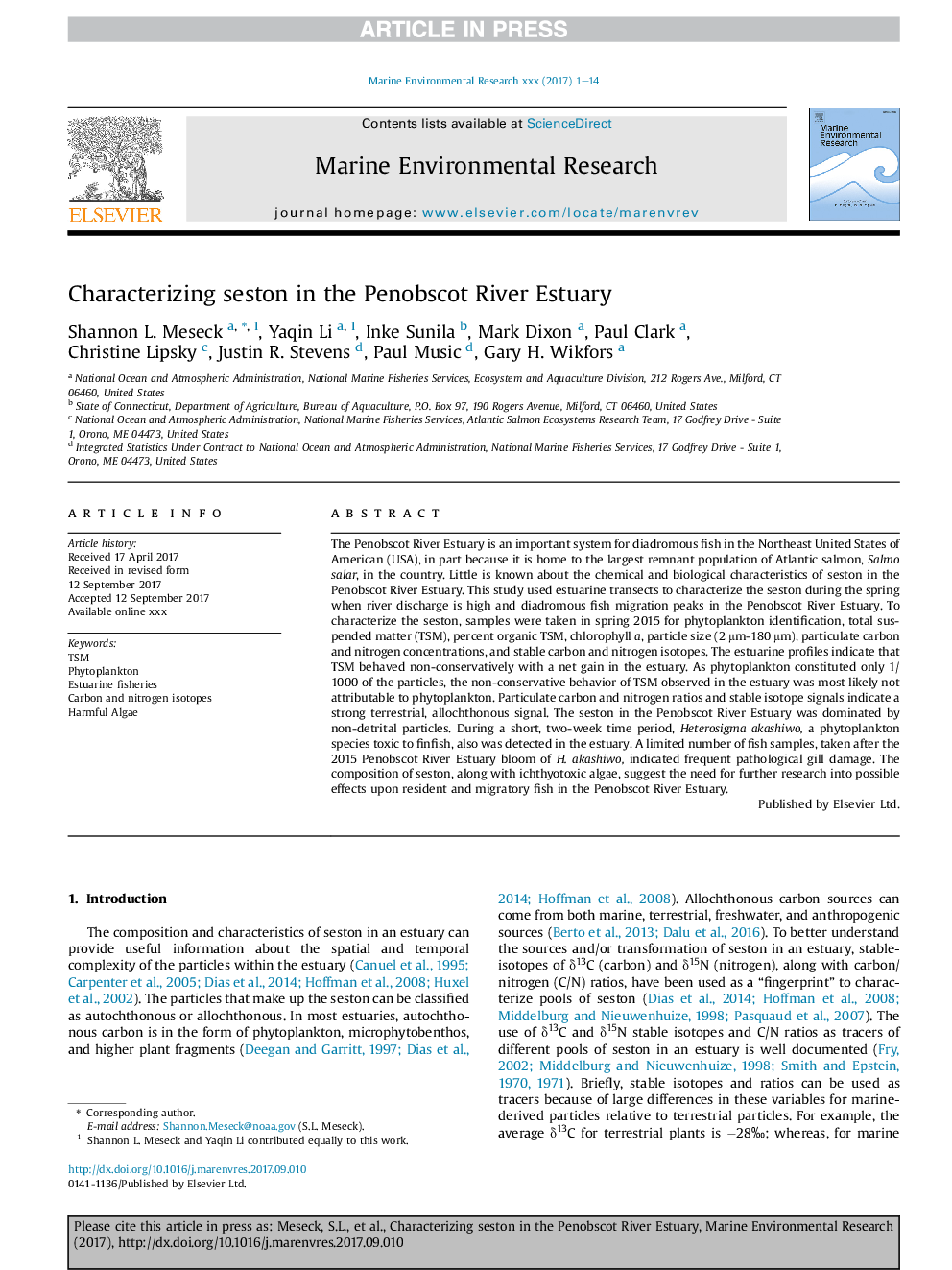| Article ID | Journal | Published Year | Pages | File Type |
|---|---|---|---|---|
| 8886438 | Marine Environmental Research | 2017 | 14 Pages |
Abstract
The Penobscot River Estuary is an important system for diadromous fish in the Northeast United States of American (USA), in part because it is home to the largest remnant population of Atlantic salmon, Salmo salar, in the country. Little is known about the chemical and biological characteristics of seston in the Penobscot River Estuary. This study used estuarine transects to characterize the seston during the spring when river discharge is high and diadromous fish migration peaks in the Penobscot River Estuary. To characterize the seston, samples were taken in spring 2015 for phytoplankton identification, total suspended matter (TSM), percent organic TSM, chlorophyll a, particle size (2 μm-180 μm), particulate carbon and nitrogen concentrations, and stable carbon and nitrogen isotopes. The estuarine profiles indicate that TSM behaved non-conservatively with a net gain in the estuary. As phytoplankton constituted only 1/1000 of the particles, the non-conservative behavior of TSM observed in the estuary was most likely not attributable to phytoplankton. Particulate carbon and nitrogen ratios and stable isotope signals indicate a strong terrestrial, allochthonous signal. The seston in the Penobscot River Estuary was dominated by non-detrital particles. During a short, two-week time period, Heterosigma akashiwo, a phytoplankton species toxic to finfish, also was detected in the estuary. A limited number of fish samples, taken after the 2015 Penobscot River Estuary bloom of H. akashiwo, indicated frequent pathological gill damage. The composition of seston, along with ichthyotoxic algae, suggest the need for further research into possible effects upon resident and migratory fish in the Penobscot River Estuary.
Related Topics
Physical Sciences and Engineering
Earth and Planetary Sciences
Oceanography
Authors
Shannon L. Meseck, Yaqin Li, Inke Sunila, Mark Dixon, Paul Clark, Christine Lipsky, Justin R. Stevens, Paul Music, Gary H. Wikfors,
